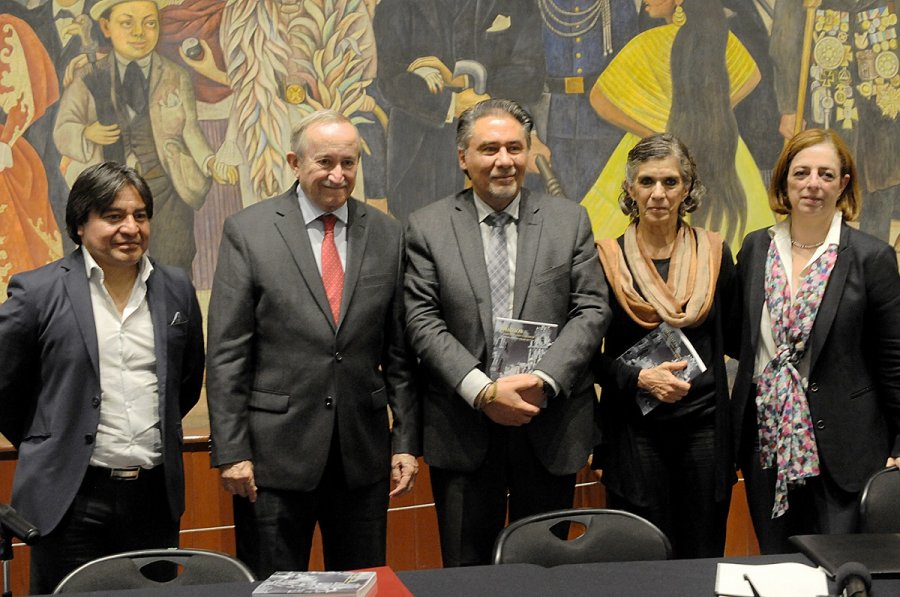Noticias
Presentation of the book Earthquakes and Cultural Heritage. Testimonies, teaching and challenges, 2017-2018
September 26, 2018Edited by the Undersecretariat of Cultural Diversity and Promotion of Reading through the General Directorate of Publications (DGP) of the Department of Culture of the Government of the Republic, the book Sismos y patrimonio cultural. Testimonios, enseñanza y desafíos, 2017-2018 (Earthquakes and Cultural Heritage. Testimonies, Teaching and Challenges, 2017-2018) was presented on the afternoon of September 25 at the Diego Rivera Mural Museum.
On behalf of the Secretary of Culture, María Cristina García Cepeda, Jorge Gutiérrez, Undersecretary of Cultural Diversity and Promotion of Reading, explained that this is a detailed restoration work of the heritage buildings affected after the emergency scenario occurred in September last year in our country.
The civil servant, who moderated the table, said that more than 2,300 historic buildings and about 6,000 personal property suffered damage of different magnitudes in 11 states of the Republic.
Through chronicles, points of view, reports and studies of specialists, the book divided into four sections, each one accompanied by a photo gallery, gives account of the Master Plan designed by the Department of Culture.
This plan had the participation of specialists in various disciplines (restoration, architecture, law, engineering, geology to name a few) and different sectors of society.
According to the architect Xavier Cortés Rocha, who participates in the publication with the text entitled "The responsibility of the architect-restorer for heritage buildings damaged by the earthquake", the magnitude of the effects was unprecedented.
"The reconstruction was faced in two phases: with emerging works that aimed to prevent a collapse and the second, which was to achieve the reconstruction of the buildings”.
He considered that once the works are finished, the idea is that the buildings are in a better situation with respect to structural stability and that they resist better a future telluric movement of this nature.
Aída Castilleja, technical undersecretary of the National Institute of Anthropology and History (INAH, for its acronym in Spanish) and Liliana Giorguli, national coordinator of Cultural Heritage Conservation INAH explained the series of actions implemented by the dependence and the challenges to be faced in the future.
"We still have challenges to face, one is to give continuity to the procedures and review, rethink and delimit our own emergency response protocols, in addition to strengthening the planning instruments for attention”.
She also spoke of increasing co-participation with the different sectors that are linked to heritage, from society, different government bodies, ecclesiastical and civil areas.
"It is important to carry out organized actions not only to defend what we have left but also to allow us to be strengthened in all circumstances in the future. Cultural heritage will require the co-responsibility of everyone”.
Anthropologist Aída Castilleja said that of the 2,300 historic buildings affected, 38% have minor damage, 43% have moderate damage and 18% have severe damage.
For Bolfy Cottom, a specialist in cultural legislation and history of public policies on culture, who wrote the text "Earthquakes in Mexico: their social and legal challenge in the cultural sphere," it is necessary to promote a culture of education and awareness that helps systematize processes after an earthquake or any other natural disaster that could put cultural heritage at risk.
Earthquakes and cultural heritage. Testimonies, teaching and challenges, 2017-2018 is already on sale in the Educal network of bookstores and from October 5 will be available in digital version at: restauracionpatrimonio.cultura.gob.mx
Mexico
